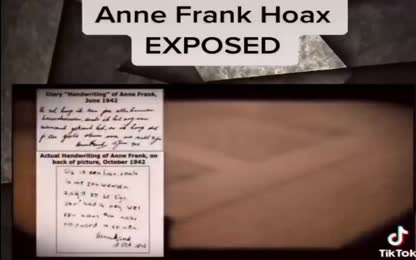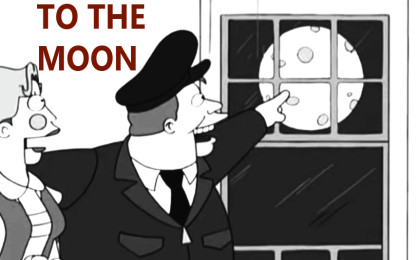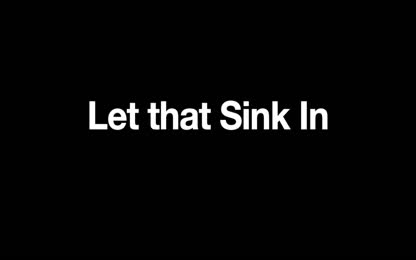Advertisement
Apollo Moon Landings Hoax - Impossibly Close Horizons
The horizons in Apollo 11, 12 & 14 photographs give the game away. A film set is a much more plausible explanation!
- Category: NASA / ISS /Mars/ Moon Landing
- Duration: 24:59
- Date: 2019-08-08 10:15:26
- Tags: moon landing, hoax, apollo, fake
1 Comments
Video Transcript:
Hello again everybody back with another video. This time looking at the Apollo hoaxes and main focus of this video are the impossible horizons and also I'll take a quick look at some of the shadows involved but that's been covered in quite a few videos but I'm not seeing anybody actually tackle the horizon so here's our ball moon, Helio's Century Moon with 2160 mile diameter and 1080 mile radius. Here's our lambda and according to some of the horizons I think the moon has to be much much smaller than this and this has to be much much bigger but welcome to that when we get there but first I'd like to go through and look at some of the curvature calculations for the moon so we can calculate the horizon distance. So this will look at a little bit of maths and how to calculate the ball moon horizon. I've done all this before. For the earth I've also set up a curvature calculator for the ball earth and I've also made one there for the ball moon. So here's our ball moon. We've got our globe moon radius of here this is a radius this is a radius and this is a radius of 1,080 miles. Okay so here we've got first viewing height of H1 looking to the horizon and the horizon is basically where your line of sight it's the curve of the ball tangentially so if you draw a line here through the horizon it's at right angles to here it's a tangent and basically where the horizon is we've moved from our original position of radial movement of this angle here L41. Now if we go a bit higher we can see further and we can now horizon two further away draw their radius there and we've moved through a bigger angle. Now you can work out for how many degrees exactly how far you've traveled on the surface of the moon and the circumference is 2 pi r so put our pi in and hour 2 and hour 1,080 for the moon radius and that gives us 6,786 miles so one degree of rotation is 6,786 divided by 360 which gives us 18.85 miles of surface travel so we can work out basically what this arc is for any degree movement here. Now to calculate how far it is to the horizon we want to calculate our line of sight to the horizon for H1 that's B1 and for H2 it's B2 now if we look here we've got a right angle triangle and we know this side which is the radius and we know this side which is the radius plus H1. Now by taking the square of the hypotenuse and taking away the square of the adjacent and square rooting it we will get B1 and this is the Pythagorean theorem basically trigonometry very very simple maths really and if we look here for H2 we quite an even bigger right angle triangle and the same applies so we can convert feet to miles by dividing by 5,280 so let's take a look okay so B1 here and we're looking at H1 and H1's 5 feet so I've had to divide that in this equation by 5,280 one mile is 5,280 feet so if we work all this out B1 for 5 foot viewing height is 1.43 miles and if we look at B2 doing the same equation so this is the square of the hypotenuse this is the square of the adjacent and we're square rooting it because that all this equals B1 squared so we square root it to get B1 and if we do for B2 we get 2.02 and if we do another one we go to B3 and do a H3 at 15 feet that goes out to 2.48 miles now it's a lot further on the ball moon because the radius is 3959 instead of 108 but 1.43 miles from the 5 foot viewing height is a pretty significant difference, distance sorry now the purist might say well the distance on the surface is this arc it's not this straight line but this is such a low angle and it follows this so closely that over the distances we're talking about it's the same and you can calculate this because you know the side here and you know this side here so you can calculate using the cosine what alpha one is and then you can multiply whatever degrees that is by 18.85 to give you the distance so let's just do that for the 15 feet just to show you so here it is is the calculation and it comes out to exactly the same look 2.48 miles now I've put this all this into a curvature calculator it also calculates the distance hidden past the horizon of their distances but we're not really interested in that for this video so here we go so height of 15 feet I've put a distance way of 10 miles of the object we're looking at here it doesn't really matter I could have just left it blank pretty gives us the horizon at 2.48 as we've just shown all four kilometers if you wanted to know what the distance hidden by the horizon under the horizon basically of an object that's 10 miles away on the moon it's at 15 feet viewing height it's 1 3 8 point 3 feet and we'll take another look at once so what I've done here is I've put in the approximate height of the cameras that the NASA astronauts were carrying on their film set up sorry on the moon and I've put a distance where 10 miles just so we can get a figure here but we can see here at 4 feet the horizon should be at 1.28 miles or 2.1 kilometers and just for your information the curvature loss if an object was 10 miles away on the moon if there was a ball moon and a view from 4 feet would be 186 feet so taking that in mind this is a photograph taken by a camera held by an astronaut astronaut sorry about 4 feet viewing height and he's taken this picture here so whether this is Armstrong or its Audrey and I have no idea but I do know it's a Apollo 11 so this horizon here look is meant to be 1.28 miles away because of sea of tranquility where it was it landed was meant to be relatively flat so we'll see all these little stones here on the floor you can see them all the here look a longer horizon line a very mine a stone at 1.28 miles which is 6,760 feet away would appear to be 1 1 2 5 times smaller than if it was 6 foot away so see this one here what's this maybe here this one is this one maybe a third of the size these would have to be giant giant bolders all along that horizon line giant bolders yeah very mind if this was 6 foot away and this was a couple of inches it's going to be 2,000 inches by the time it gets to there and also we've got the shadow look look at the shadow here the shadow is almost going to the horizon and you can see all these stones here so basically this is fairly clear to me that this is not on the moon it's staged it's a set and to give you a little bit of perspective to what it would look like on the earth that we familiar with this is a road that I walked down many times and I know this hedge here and I've reached up to the top of it or as high as I can on my reaches about 7 foot 6 to my fingertips and my hand is maybe 4 or 5 inches short at the top of this so this is around 7 foot 6 to 8 feet tall so I've done here is I put a guide along where the hedge here this is to about 6 foot something 7 foot tall and this guide here is where critical points of the lunar lander will be so I've cut out a lunar lander I'm going to put it into this little grid here and I'm going to make the astronaut this height and I'm going to slide it along so let's just go back and show you what it means so this support here it's a level with the horizon this is coming forward so it's slightly below but this one's level okay so I've put a grid line on that diagram so let's go back to it now let's slide the lander across so this is probably a good scaling because see the astronaut here now what you want to show you is this road is behind four miles long and it drops about five feet from the top to the bottom what look where this is yeah look it's here it's not and the horizon would be if I could see in the work trees here would be somewhere up here so do you see that it looks nothing like this and can you imagine trying to see you could see a stone on the road here you imagine in trying to see a similar stone down there it will be virtually impossible this is just zooming in to show you where the bottom of the road is you can just about see a van there you can see much better here okay so it's not looking good is it so here we go again just to show you that diagram does that look like that point four miles bearing mine that point four miles and that road is only a third of where a lunar horizon should have been a third and look at this so this is the lunar module by Apollo 11 and I think when they first started this they just didn't expect people to be able to work out whether the horizon was an even question that it was fake but there was a film called Capricorn 1 where the astronauts were told at the last minute that they couldn't actually do the mission through the fact it was impossible or something but these astronauts escaped and told the world but not gonna happen here because these guys are free Masonic deceivers and they're all part of the game and they were well brought into it before they even started but can you see the similarities look yeah the horizon does he look very similar to this and this is a film set guys yeah and he's the astronaut similar size to this one so there you go maybe that's the truth Capricorn 1 in plain sight just another few photographs I think this is old Buzzy Mr. Freemason coming down his ladder but look at that horizon guys look look at the bits I think yeah 1.2 miles my ass 1.2 miles again another photograph of Apollo 11 this time there was something that took my attention here I blew it up originally to show that these boulders went to the horizon but there's all kinds of stuff I don't know what this is this is where the horizon is but what's this look like to you it could be just a coincidence but that looks a bit like a dog to me and I wouldn't be it passed the whistle blowers to have done that okay so here we go with another photograph famous photograph look at the horizon you can see all this detail 1.2 miles away no chance this is a reflection here we'll have a look at that to show you what it's like for the other side so we've got the module taking the shadow virtually to the horizon I have no idea what this is and we've got the shadow on the leg here and the shadow of the astronaut does not very convince in this shadow but there is a lot of distortion in the helmet is another one let's take a look at that look at the rocks right the way to the horizon how fast that 50 60 feet I'd say 50 60 feet maybe 70 at the most so let's say 50 to 70 feet on the film set there's another one where things look even worse you can see stones on the horizon it looks even shorter here to that horizon 1.2 miles my ass another one it's virtually the same photo but with an astronaut in I've just put an arrow showing these stones on the horizon just another photograph of Apollo 11 not much of an horizon here this is the backside of it I don't know whether this is meant to be vertical whichever is casting a shadow next to the astronaut if it was vertical then there's no way with a local with a distance on these lines should cross but I don't know what this is I just put these on because you'd expect if these were at the same kind of distance looking this way they shouldn't intersect before the horizon but they do intersect not far maybe 20 30 foot past the astronaut another one of Apollo 11 this is old buzz with some experiments apparently but look at the horizon here 1.28 miles no chance there's another one very very short horizon but now we've moved on to Apollo 12 and this is the astronaut coming down his ladder and here we've got the window and in this window I assume this is meant to be the reflection of the surface of the moon but when we look at that what on earth is this does that look like the surface of the moon to you or is somebody just hairbrushed it in and done a bad job I'll go for the latter personally another one Apollo 12 not looking good for 1.28 miles there another one here and I've taken a photograph in the visor as you can see very very short horizons involved here another Apollo 12 shorter horizon but I'm not sure what this is I've blown it up here but is the astronaut taking the photograph I have no idea what happened to each other and whether there's a big drop here or what but looks like he's bent over double here no idea what's happening it's very very odd that one okay just another Apollo 12 again we can see stones along the horizon line and it's meant to be 1.28 miles away another one Apollo 12 this time the shadow from the lander is touching the horizon 1.28 miles no chance and to sum up Apollo 12 this is meant to be the original Apollo 12 command module and we've this photo you can find on the internet it comes up quite quickly and a little odd standing dead center of it with a big 33 for masonry telling you that this is a hoax basically now Apollo 14 this is interesting this was a screenshot from a video and it was a cine camera of the guys coming out of the lander can't remember what the lander was called on Apollo 12 a great big shadow horizon doesn't look too far away and again 1.28 miles of horizon doesn't look good now bearing in mind in Apollo 11 12 and 14 meant to land on fairly flat terrain which kind of gives the game away on the horizon front when you've got a film set and you're trying to mimic a large area and maybe nobody calculated the lunar horizon from four feet you'll be 1.28 miles but we'll see they came up with a remedy to make it easier to confuse people to deceive people by putting mountains around the perimeter of the views on Apollo 15 16 and 17 but so let's move on to this other photo so we've got this photo here and this is a landscape photograph here's the number AS 14 68 9487 and basically this was the photo still photo I took so here we've moved back we would have had to go up a hill to see all this behind the lander I don't know why it suddenly changed from here to this but you can see it's exactly the same orientation so here's the patch is the hatch here's the back ladder here and he is the steps here now to me this looks really odd you can't see any hills or anything in the background on this one but you can hear we've got a little astronaut here and we've got this other photograph which is taken from slightly different angle here we're looking at this side so this is the front we're looking on to side on view so we're looking in this direction but I can't see I'll see a few features but I can't see anything there in mind the sun hasn't moved very much because they weren't there that long but I can't see anything on the level here with this lander that looks like anything like this very mind this space is going to get wider as we come around so what is this maybe here but then this bit doesn't look like this bit just looks that this is a different landscape it may be a different model to this there is something else in this it's been highlighted before and that's the shadows so let's take a look at shadows so here we've got a line of poles and here we've got shadows running across in the nice photo of the birds sheltering from the sun in the shadow there and if we look we've got parallel shadows now perspective for things that are close on in the liner site we'll make these lines compress as we move backwards yeah but they should stay parallel and as we can see they essentially do now on this photograph we've got a liner site here so this is in line with this liner site so we should expect with a distance sun for the shadows to be parallel but they're not they're not parallel at all now to me that means diverging shadows on a liner site like that I can understand if they're off the liner site and there are different angles perspective can do all kinds of things but these shadows are diverging and to me that means a close studio light or a model light or however you want to look at it but that just does not look right so we've got a power 14 there's some photographs here of the horizon again shadow is a good way towards it we've got a rock here pretty close to the horizon is that 1.28 miles away here we've got another very closer horizon on a polar 14 you can see so many features and it will stones at 1.28 miles bear in mind I think I'd be well over a thousand times smaller at 1.28 miles and they are at 6 foot away again polar 14 showing a very very close horizon maybe 30 40 feet away now this was interesting there's not much you can find on a polar 15 for the horizon because there's lots and lots of mountains but here I just looked at this and I just wanted to blow this up and see what this this was here it's clearly an astronaut there so I don't believe it up when I writing to you took a little bit or sorry I think I darken this but there's some strange lines around here look and around here and here not so much here but there's no line here all the way up here there's no line it just starts here so is that because this has been somehow photoshopped in this just doesn't look good here this looks really odd and strange so a few anomalies there this is just showing you on a polar 15 that there's no horizon difficult to see here because there's a backdrop probably painted in I don't know how it's been doing basically but featureless mountains smooth featureless mountains doesn't look real just doesn't seem to have any 3D substance in it at all and showing you again surrounded by hills but very very straight lines involved into a line right across here like that so again strange looking photo and this one I found of Apollo 16 again we've got some shadows a shadow from this rock running here I'm going to let the shadow of the astronaut and a shadow of the lander now this is all in the same line of sight so you would expect the shadows with a distance on to be parallel so the reason it isn't I would say is because it's studio lighting Apollo 17 just showing again you can't look at the horizon because it's got mountains in the backdrop but you do see a discreet color change here all the way across and featureless two-dimensional looking mountains in the background just look like something that will be painted on to me okay so impossible horizons I know they didn't go to the moon I'm just trying to prove little bits here and there to show they didn't and basically yeah Capricorn one was probably something that gave the game away and here we go look similar looking horizon distances and basically that's all from me so that's the end guys thanks for watching thanks for listening and it's a film set bye bye










 Donate
Donate







